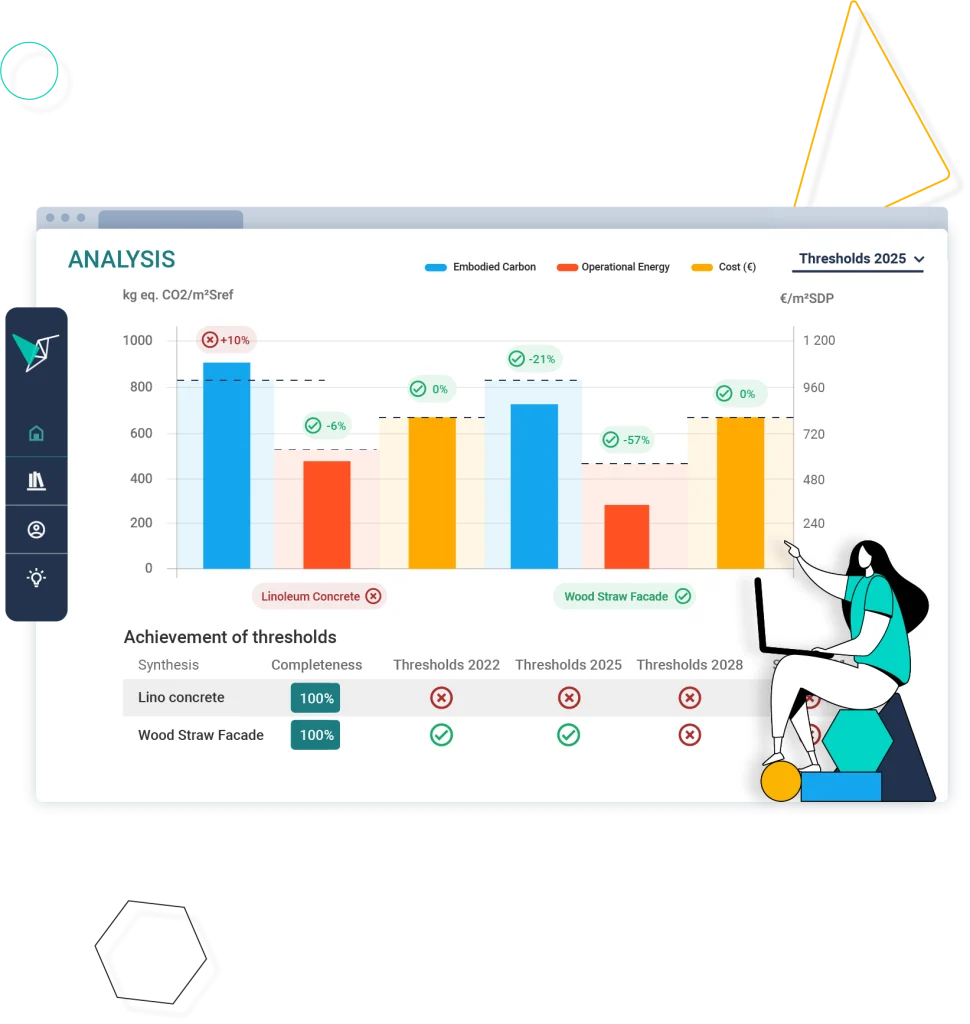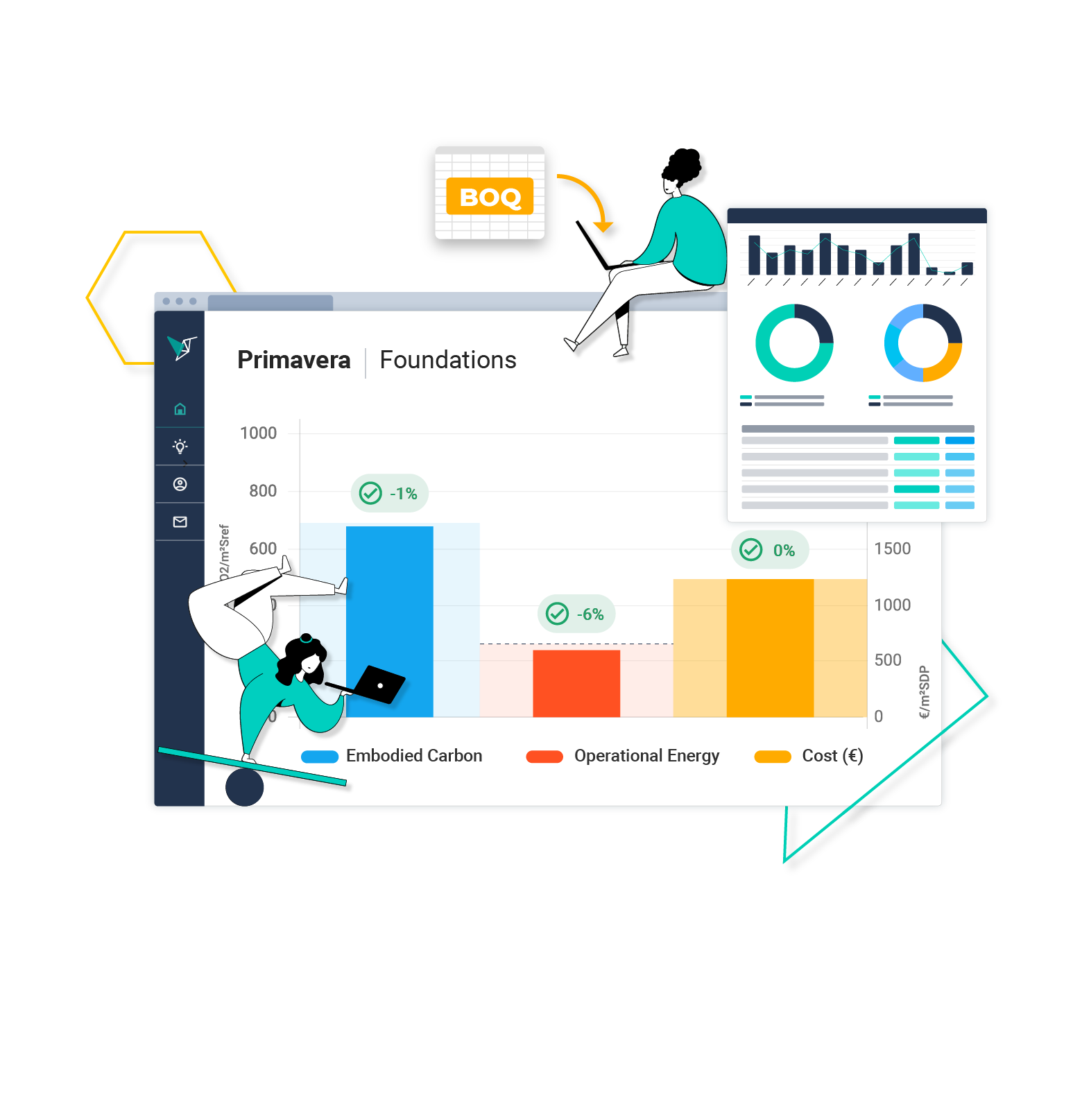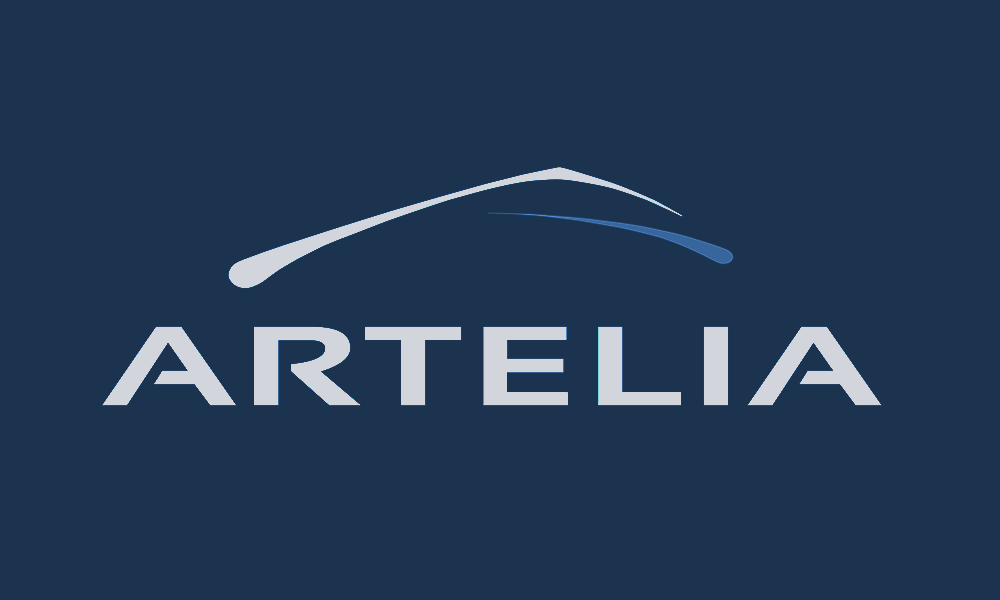Your international LCA platform to cut your projects’ carbon impact
Decarbonize your projects and drive early low-carbon decisions with Vizcab LCA


Solutions
360° LCA platform
The simplest solution to the building carbon cost equation
- Achieve net-zero and cut carbon across your projects and secure certifications (BREEAM, LEED, RICS)
- Run complete life cycle assessments for buildings (WBLCA)
- Ensure compliance with international and local sustainability standards
Vizcab is the carbon accounting software with all the essential tools to estimate, measure, and optimize the carbon footprint of your construction project.
Approved by leading construction companies






Measure the carbon impact of your projects with collaborative and user-friendly tool

countries with which our software is compatible

years of experience developing Life Cycle Assessment (LCA) software.

EPDs in our database

Net-Zero Carbon
Measure all carbon emissions and savings to chart a clear path toward net-zero carbon buildings

Carbon Strategy Tool
Transfer your construction project LCA results into Analytics for CSRD reporting

Material Comparison
Find & compare sustainable materials from around the world

Life Cycle Costing
Estimate costs across every life-cycle stage and identify the most sustainable, cost-effective design solution.

Early Design Tools
Secure the carbon objective quickly from the outset and avoid the upstream paradox

Validated by the Tech community










